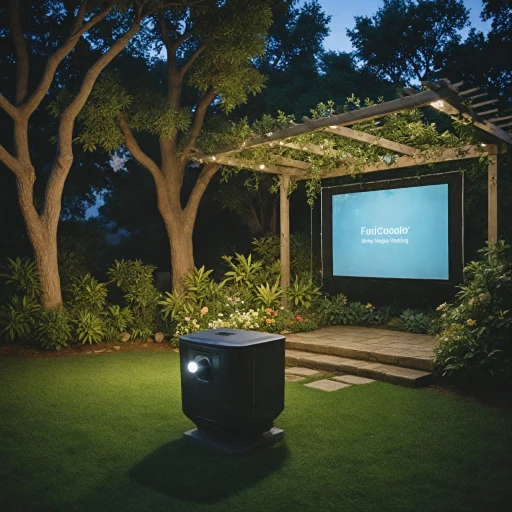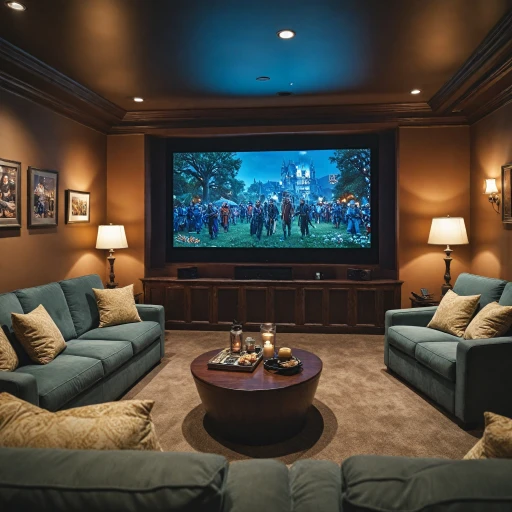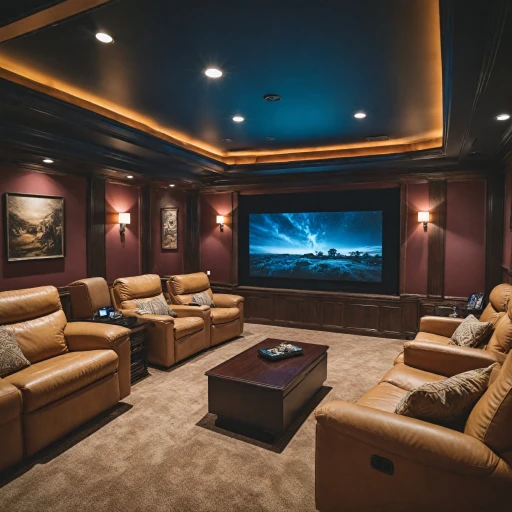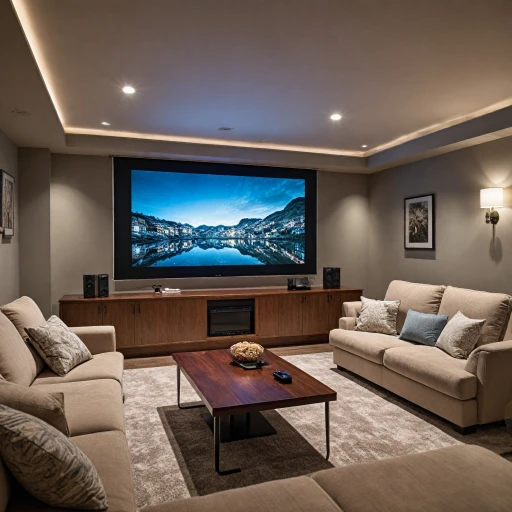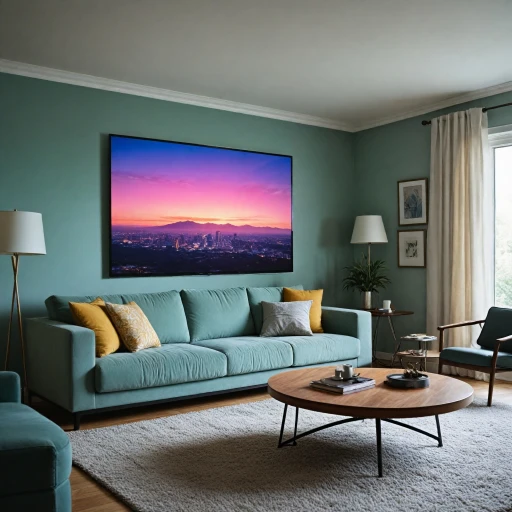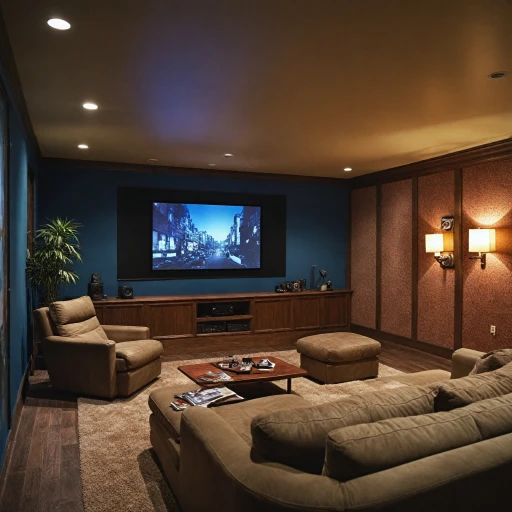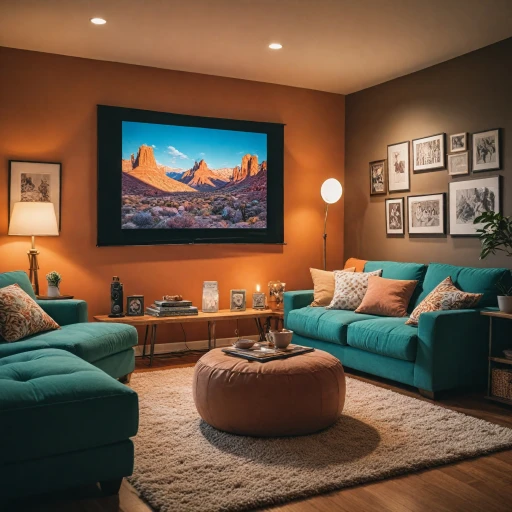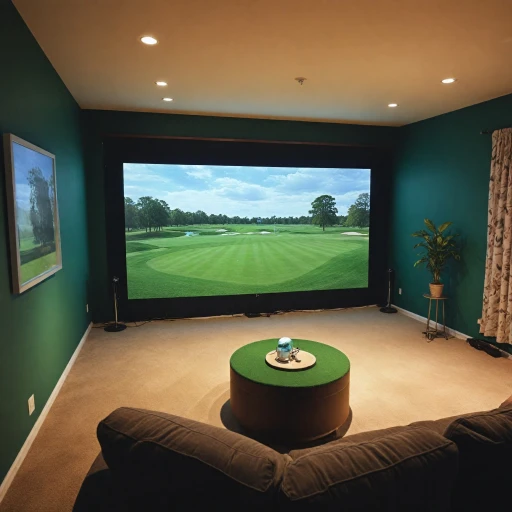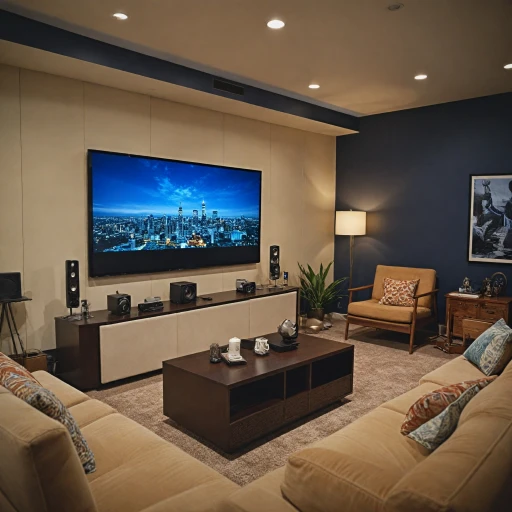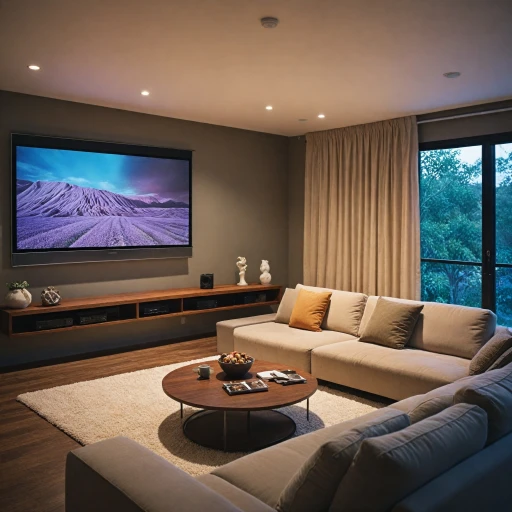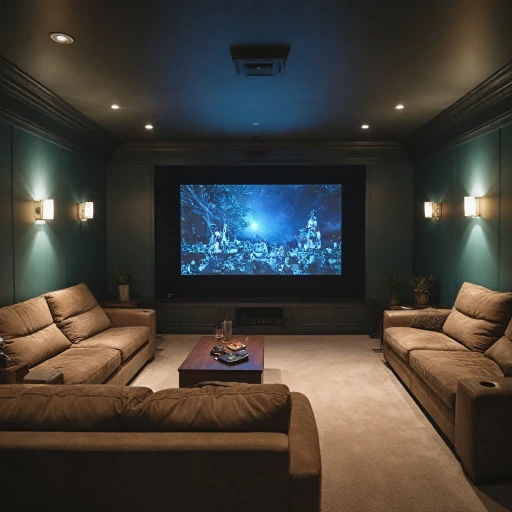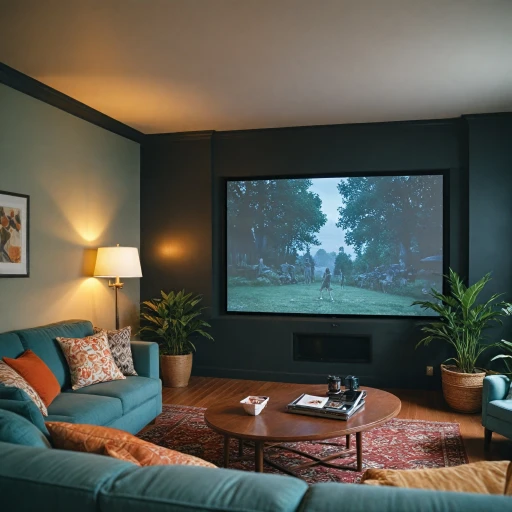
Understanding LED Projector Technology
Delving into the Mechanics of LED Projectors
LED projectors have carved out a notable place in the home theater landscape, thanks to their unique technology and benefits. As the name suggests, LED projectors use light-emitting diodes as the primary light source, setting them apart from traditional lamp-based projectors. This modern approach offers several advantages, including longer lifespan and enhanced energy efficiency, making them a preferred choice for home theater enthusiasts.
Unlike other types, such as laser or DLP projectors, LEDs are recognized for their ability to produce high-quality images with minimal power consumption. This results in brighter projections and sharper colors, providing a compelling viewing experience for both movie buffs and gaming aficionados. With the right resolution and lumens, the image quality can rival more expensive systems.
An LED projector's brightness is generally measured in ANSI lumens, an industry-standard metric indicating how much light the projector can throw. While browsing various reviews, you may come across popular models like the BenQ, Anker, or the portable Nebula Mars series, which offer different levels of brightness to suit various home theater setups and ambient light conditions.
Portability is another highlight, with many LED models, such as the Anker Nebula Capsule and Mars Air, coming with a built-in battery. They provide the flexibility to set up a theater experience almost anywhere without the need for constant power supply, thanks to inputs like HDMI and USB, facilitating seamless connectivity to a variety of sources.
For those with limited space, short throw and ultra short throw options are available, allowing images to be projected over a shorter distance. This feature maximizes image size without requiring a large room, ideal for urban living or versatile usage. Those considering a shift from traditional technologies or exploring options for new installations might find comparing LED with other technologies resourceful. Expanding your understanding of available technologies can aid in determining the best theater projector for your needs. For those specifically interested in the comparison with laser technology, read more about the possibilities here.
Advantages of LED Projectors in Home Theaters
Unveiling Key Advantages: Why LED Projectors Excel for Home Theaters
When it comes to creating the perfect home theater, choosing the right projector is crucial. LED projectors have emerged as a top choice for enthusiasts seeking a balance of performance and convenience. Distinguished by their specific technology and characteristics, LED projectors offer numerous benefits that make them an attractive option.- Improved Image Quality and Brightness: LED projectors use light-emitting diodes instead of traditional lamps, providing greater brightness and color consistency over time. This translates to vibrant displays with high contrast and saturation. With ANSI lumens, a standard measure of brightness, these projectors deliver an impressive image clarity even in lit rooms.
- Energy Efficiency and Longevity: The longevity of LED lights is a standout feature. While traditional lamps may need replacing every 2,000 hours, LEDs can last up to 30,000 hours, reducing maintenance and replacement costs. This makes LED projectors not only energy-efficient but also cost-effective in the long run.
- Compact and Portable Options: Home theaters aren't confined to specific spaces anymore. Thanks to portable projectors like the Anker Nebula Capsule, movie enthusiasts can enjoy cinematic experiences anywhere. These mini projectors often come with a built-in battery, HDMI, and USB inputs, making them perfect for flexible viewing.
- Rapid Start-up and Cooling: Unlike their lamp-based counterparts, LED projectors typically have quick start-up times and nearly instantaneous cool-down periods. This feature allows users to enjoy their favorite content without the long wait, enhancing the overall theater experience.
Choosing the Right LED Projector for Your Space
Key Factors When Selecting a Home LED Projector
Choosing the right LED projector for your home theater hinges on several critical factors that will enhance your viewing experience. LED projectors have become a popular choice due to their advanced technology and longevity, but selecting the ideal model requires careful consideration of numerous attributes.
- Brightness and Lumens: The projector's brightness, typically measured in ANSI lumens, is essential. A higher lumen count means the projector can deliver a clearer image in brighter rooms. Consider going for models like the BenQ or Anker Nebula which are known for their substantial brightness, making them suitable for various lighting conditions.
- Resolution: For a sharp and clear picture, opt for higher resolutions, especially if you're an enthusiast for detail and clarity. HD or 4K resolutions are favored for home theaters, offering superior image quality.
- Throw Distance: Depending on your room size, you'll need to consider the throw distance, which affects how far the projector can be from the screen and still provide a clear image. Some models, like the ultra short throw projectors, can be positioned much closer to the screen.
- Portability: If flexibility is a priority, consider portable projectors that offer ease of movement and setup. Models like the Nebula Capsule and mars air combine portability with quality, being both mini projector options and offering built-in battery features.
- Connectivity: Ensure the projector supports necessary inputs like HDMI and USB for maximum compatibility with your devices. This ensures smooth integration, whether you're hosting a movie night or engaging in gaming sessions.
- Additional Features: Some LED projectors also include smart features, such as built-in streaming services or enhanced sound systems, which may add to the overall home theater experience.
For a comprehensive guide on enhancing your viewing experience with LED projectors, consider exploring detailed reviews and comparisons to choose the best fit for your home setting. The right projector can turn your living space into a captivating cinema experience, enriching your leisure and entertainment pursuits.
Installation Tips for Optimal Viewing Experience
Setting Up Your LED Projector
When it comes to setting up an LED projector for your home theater, getting it right the first time can make all the difference in your viewing experience. Here are some tips to ensure you get the best performance out of your projector:- Consider the Throw Distance: Understanding the throw distance is essential. Whether you have a short throw, standard throw, or an ultra-short throw projector, measuring the distance between the projector and the screen will determine the size of the image. For instance, ultra-short throw projectors require minimal space, making them ideal for smaller rooms.
- Optimize the Screen Location: Ensure that your screen is placed on a flat wall without interference from ambient light sources. Using a dedicated projector screen will enhance the image quality, as opposed to projecting directly onto a wall. A screen helps maintain the intended brightness and resolution.
- Adjust the Image Settings: Once your projector is positioned correctly, it's time to adjust the brightness, contrast, and sharpness. LED projectors often provide controls for customizing the image to your preference, whether you're using it for gaming or movie nights. Brands like BenQ and Anker Nebula offer models with various settings to improve your viewing experience.
- Utilize the Keystone Correction: Many projectors come with keystone correction features that help align the image perfectly to your screen. This is particularly useful if your projector is not mounted perfectly perpendicular to the screen or if it's placed on a portable stand.
- Set Up Connectivity Options: Consider your connectivity needs and ensure your projector has enough HDMI and USB inputs for your devices. Models like the Anker Nebula projector and its variants ensure versatile connectivity, allowing you to switch easily between streaming devices, gaming consoles, and more.
- Calibrate for Ambient Light: LED projectors perform best in a darkened room, but if there’s unavoidable light, adjust the projector’s settings to enhance visibility. Ensuring your projector has high ANSI lumens can help combat this issue and maintain optimal image quality.
Maintenance and Care for LED Projectors
Keeping Your LED Projector at its Best
To ensure that your LED projector continues to deliver optimal performance and longevity, regular maintenance and proper care are essential. Here's a review of some key practices to keep your home theater setup running smoothly:
- Cleaning the Lens: Dust and debris can accumulate on the projector lens, affecting the image quality. Use a soft, lint-free cloth to gently clean the lens surface. Avoid using harsh chemicals or paper products that can scratch the lens.
- Ventilation is Key: Projectors, including portable and theater models, can generate significant heat. Ensure that there is adequate airflow around your projector by keeping it away from walls and obstructions. This minimizes the risk of overheating, especially for models like the Anker Nebula and Nebula Capsule.
- Regular Dusting: Dust can accumulate on the projector housing and in ventilation slots, particularly if the projector is installed permanently. Regularly dust these areas to maintain optimal airflow and prevent internal components like the LED light from accumulating heat.
- Check for Firmware Updates: Manufacturers, such as BenQ and Anker, occasionally release firmware updates for their projectors. These updates can enhance performance, improve compatibility with hdmi usb inputs, and sometimes even boost brightness or resolution.
- Proper Shutdown Procedures: After an intense gaming session or a movie marathon, allow the projector to cool down before turning it off completely. This protects the internal components, prolonging the lifespan of both the projector and its built-in battery if it's a portable projector.
Regularly reviewing and following these maintenance tips will greatly enhance the longevity and performance of your LED projector, ensuring that your home theater setup remains the best for enjoying high-quality content and vivid images.
Comparing LED Projectors with Other Technologies
Comparing LED Projectors with Other Technologies
When diving into the world of home theater projectors, it's essential to understand how LED projectors stack up against other technologies like laser and traditional lamp projectors. Each type has its unique advantages, and your choice will depend on your specific needs and preferences.
LED vs. Laser Projectors
- Brightness and Light Source: Laser projectors often boast higher brightness levels, measured in lumens, making them suitable for larger spaces or rooms with ambient light. However, LED projectors offer a consistent light output and are known for their longevity.
- Image Quality: Both technologies deliver excellent image quality, but laser projectors might edge out in terms of color accuracy and contrast. LED projectors, however, provide vibrant colors and are more energy-efficient.
- Cost: LED projectors are generally more affordable than laser projectors, making them an attractive option for budget-conscious buyers.
LED vs. Traditional Lamp Projectors
- Lifespan: LED projectors have a significantly longer lifespan compared to traditional lamp projectors, which require frequent bulb replacements.
- Portability: Many LED projectors, like the Anker Nebula series, are designed to be portable, offering built-in batteries and compact designs, unlike their bulkier lamp counterparts.
- Maintenance: With fewer moving parts and no need for bulb replacements, LED projectors require less maintenance, making them a hassle-free option for home theaters.
Considerations for Gaming and Home Theater Use
For gaming enthusiasts, LED projectors offer a good balance of resolution and input lag, ensuring a smooth gaming experience. When paired with a quality screen, they can deliver an immersive theater-like experience. While laser projectors might offer superior brightness, LED projectors provide a reliable and cost-effective solution for most home theater setups.
Ultimately, the best choice depends on your specific needs, whether it's a portable projector for on-the-go use or a high-performance model for a dedicated home theater room. Reading detailed projector reviews and considering factors like throw distance, ANSI lumens, and available inputs like HDMI and USB can guide you in making an informed decision.


